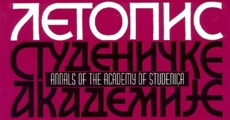| |
MODERN
APPROACH TO DETECTION AND FOLLOW-UP OF RECURRENT RECTAL TUMOR
Miučin-Vukadinović
I, Ađić O, Petrović B, Prvulović M.
Institute
of Oncology Sremska Kamenica, Sremska Kamenica, Serbia
and Montenegro
|
|
| |
ABSTRACT
Recurrent
rectal tumor appears in 50% of the patients during the first year
after resection, in 80% during the second year, and during the first
four years it appears in 93% of patients. Introduction of follow-up
protocols in 2 to 3 months after initial surgical treatment and
every 6 months during the first 2 years using standard roentgen
techniques, CT and/or MRI, and TRUS (transrectal ultrasonography)
for the purpose early detection or recurrent tumor and/or metastases
is of great importance for further prognosis and better quality
of life. The aim was to examine the use of MRI in the evaluation
of the possibility of recurrent tumor resection and/or the possibility
of liver metastasis resection, and the use of TRUS in the evaluation
of recurrent tumor appearance after proximal (Dixon) resection.
All patients were examined by means of Magnetom SP 63 1.t T, Siemens,
using standard protocols: SE t1Waxial TR 570, TE15 Thk8-10, M 128x256,
TSE T2W axial TR 4826, TE103, Thk 8-10, M 128x 256, TSE T2W sagittal
TR 3810, TE 103, Thk7-10, M 280x512, SE T1W coronal TR450, TE15,
Thk7-10, M 280x512, and GDTPA contrast medium. All patients underwent
different types of surgical protocols: Milles 80 patients (64.5%),
Dixon 25 patients (20.2%), Harrtman 8 patients (6.5%), Maydl 6 patients
(4.8%), and local tumor excision 5 patients (4%). Postirradiation
therapy was used for the treatment of 29 (23%) patients. Recurrent
tumors were detected in 73 patients (59%). The use of Gd-DTPA made
possible demarcation of tumor process from the surrounding structures
and organs. Parallel use of CT imaging technique detected less than
76% of recurrent tumors compared with MRI. MRI is useful for examination
in early and late postoperative period, and postoperative, postirradiation
period. Disadvantage of MRI technique is a lower sensitivity in
the differentiation of small tumor masses of fibrous tissue (tumor
desmoplastic nature). The use of TRUS in the detection is accompanied
with certain limits. MRI technique is superior to CT in detection
and local spreading of recurrent rectal tumor.
|
-
|
| |
Keywords:
Colorectal cancer, follow up, MRI, CT, transrectal ultrasonography
|
|
|

